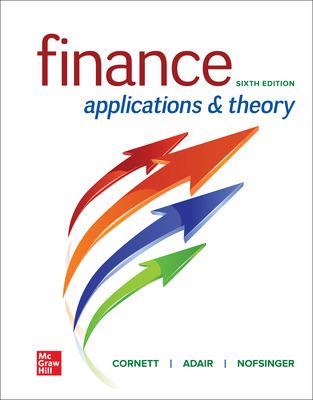Answered step by step
Verified Expert Solution
Question
1 Approved Answer
* * Please answer in it's entirety with current stats, Thank you * * To start off, pick an S&P 5 0 0 company that
Please answer in it's entirety with current stats, Thank you
To start off, pick an S&P company that has paid a dividend in the last year For your chosen
company, proceed to answer the questions below. The questions are a mix of qualitative and
quantitative questions. For questions requiring calculations, be sure to show your work. If you do
not show your work you will not get full credit. Please let me know if you have any questions.
Section : Getting to Know Your Company
What is your company, and what is its ticker symbol?
What industry is your company in What are two or three of its biggest competitors?
Briefly describe what the company does.
Compare your company's stock performance to the performance of the overall stock
market ie S&P
Did your company underperform or overperform the overall stock market? Why do you
think this happened?
Section : Your Company's Future
Look for recent news stories about your company. What are some major projects or
initiatives your company is considering? Why do you think your company is considering
these projects?
Do you think these potential investments would make sense for your company? Why or
why not? Note: For this question, you don't need to do any calculations. You just need
to discuss the projects from a business perspective.
How do you think the overall stock market will perform over the next year? Be sure to
provide evidence to support your answer.
How do you think your company will perform compared to the overall stock market over
the next year? Be sure to provide evidence to support your answer.
Section : Your Company's Capital Structure
Find the amount of longterm debt for your company based upon its latest Q filing.
Find the book value of equity based on the company's latest filing.
Find the current market value ie market capitalization of your company.
Why might the book value and market value of equity differ?
What is the weight of debt and equity in your company's capital structure?
Section : Your Company's Debt Profile
What is your company's longterm credit rating?
What does the company's credit rating tell you about the company's risk of default?
How many different bonds does the company currently have outstanding?
Pick bonds. What is the maturity date of each bond?
Do any of the company's bonds have any special features eg call provisions, sinking
fund requirements, conversions, etc.
What is the current yieldtomaturity for the most recently issued bond?
Section : Your Company's Dividend History
What is your company's current annual dividend? Note: Most companies pay dividends
quarterly. You will need to add up the prior four dividends to get the annual amount.
Determine the annual dividend for the past five years.
Is there a pattern to the dividends? Are the dividends constant, growing, or uneven?
What has been the average dividend growth rate over the last five years.
Find the company's current stock price.
Using the information above, calculate the cost of equity using the dividend discount
model DDM
Section : Systematic Risk and Your Company
Estimate your company's beta. Note: You can download the historical stock return and
market return from Yahoo! Finance
Find the current riskfree rate. How did you estimate the riskfree rate?
Assume the market risk premium is Using the information above, calculate the cost
of equity using the capital asset pricing model CAPM
Section : Calculating Your Company's Weighted Average Cost of Capital
Compare the cost of equity that you found using the DDM and the CAPM. Why might
you get two different estimates using the two different models?
Do you believe the DDM or the CAPM provides a better estimate of the cost of equity for
your company? Why?
Based on your company's most recent filing, what is its tax rate?
What is the WACC for your company?
Section : Capital Budgeting
Suppose your company is considering two projects Project A & Project B
Project A: This project is the introduction of a new product. It will require an upfront
investment of million dollars. At the end of year the project will generate
million dollars in FCFs At the end of year the project will generate million dollars
in FCFs At the end of year the project will generate million dollars in FCFs At the
end of year the project will generate million dollars in FCFs At the end of year
the project will generate million dollars in FCFs The project will generate no more
FCFs after year
Project B: This is an expansion of the company's main office. This project will require an
upfront investment of million dollars. In year the expansion will generate
million dollars in After the first year, FCFs will grow by each year forever.
Calculate the IRR of each project.
Calculate the NPV of each project
Calculate the Payback Period
Step by Step Solution
There are 3 Steps involved in it
Step: 1

Get Instant Access to Expert-Tailored Solutions
See step-by-step solutions with expert insights and AI powered tools for academic success
Step: 2

Step: 3

Ace Your Homework with AI
Get the answers you need in no time with our AI-driven, step-by-step assistance
Get Started


